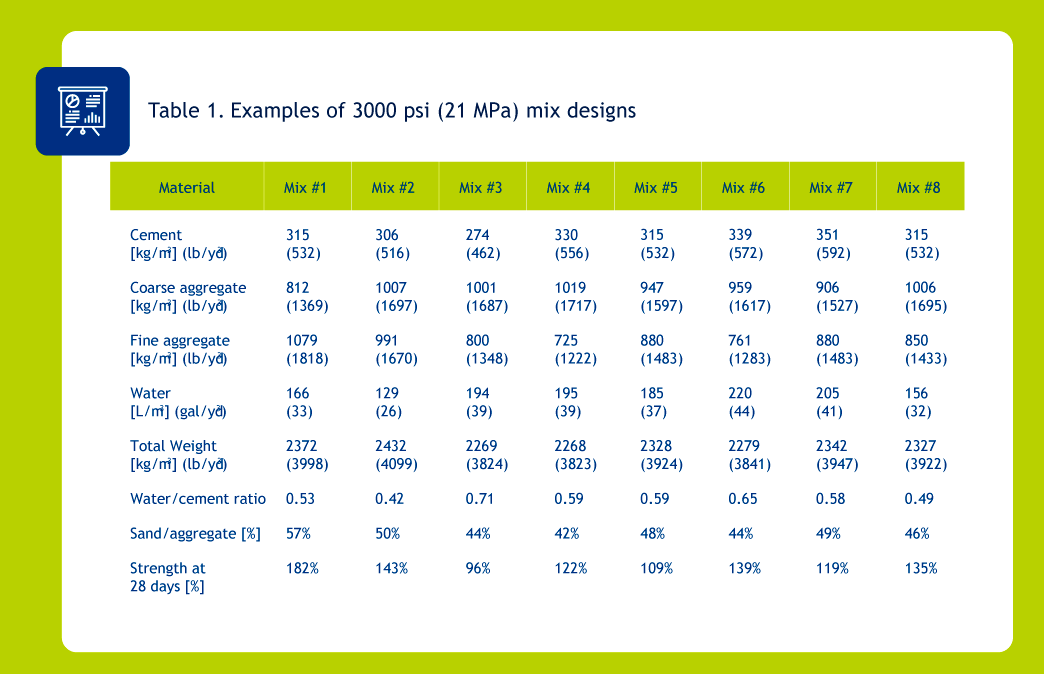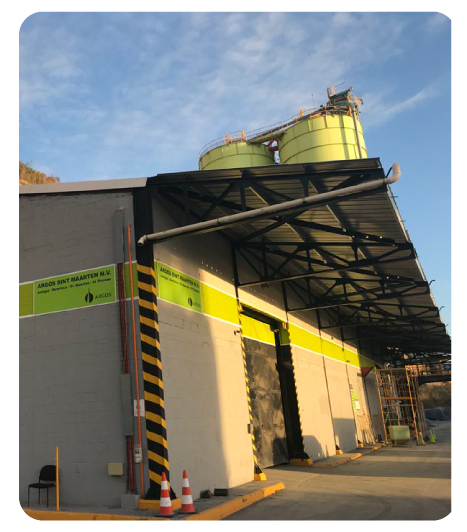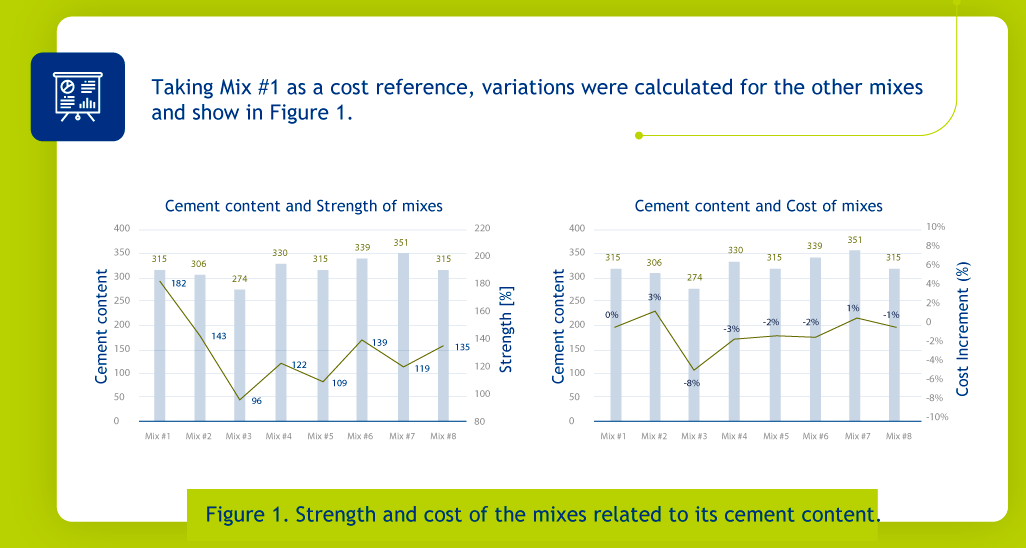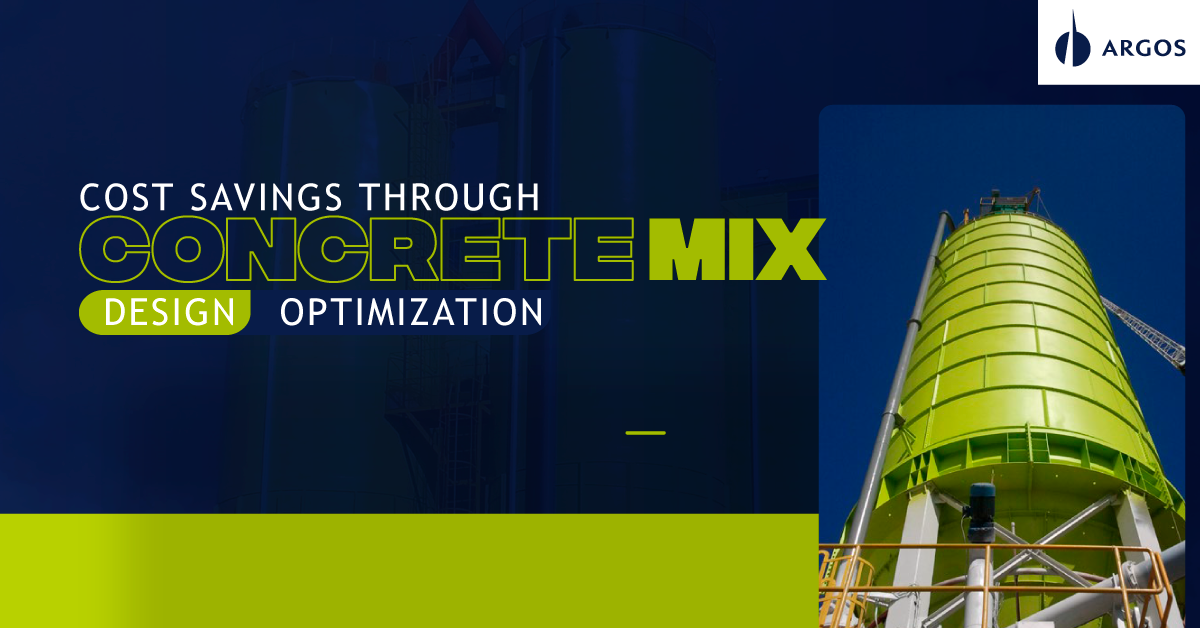On many occasions, we nd ourselves reviewing mix designs that, despite meeting the strength requirement, are not the best economical solution or the mix could present inconveniences for placing it at the job site, or even further, not comply with a required performance level.
Therefore, it is essential to have an adequate proportioning of materials which allows obtaining a mix that meets the technical requirements like strength and durability and whose cost is the lowest possible.
It is not uncommon to nd ourselves (clients and ready-mix producers in different countries or locations) looking for improvement opportunities.
In this case, we present a data set (see Table 1) of different examples of mixes for 3000 psi (21 MPa) which will help us draw important conclusions regarding proportioning, strength results and costs.
This data set was created for this exercise and does not come from any of our clients.


It can be noted that there are mixes like #4, #6, and #7 in which, despite having a high cement content, they do not reach the highest strength. On the contrary, there are mixes like #1 and #2 that reached the highest strengths (182% and 143% respectively), even when their cement contents are close to 315 kg/m3 (532 Lb/yd3).
One of the factors responsible for the differences in the results is the amount of water used (in other words, the water cement or w/c ratio). The greater the amount of water, the lower the strength of the concrete.
As can be seen in Table 1, there are w/c ratios ranging from 0.42 to 0.71 whose mixes obtained strengths of 143% and 96% respectively.
However, we see that there are mixes like mix #1 with a w/c ratio of 0.53, which obtained the highest strength of the group (182%).
Another determining factor in the difference in the results is the combination of the aggregates.
For example, the more sand or ne material in the aggregates, the more cement will be required in the mix.


According to the results, having more cement does not necessarily mean the concrete mix will be more expensive. For example, Mixes #4 and #6, which have the higher cement content (330 and 339 kg respectively) compared to Mix #1 (315 kg), have lower total cost by 3 and 2% respectively. On the other hand, there is Mix #2 which has a lower cement content (306 kg) compared to Mix #1 (315 kg) but its cost is 3% higher than Mix #1.
For the reasons mentioned before, a balance must be found in order to achieve a mix that, in addition to meeting the fresh state requirements (workability) and hardened state requirement (strength), is also the best mix from the economical point of view.
The Argos Technical Advisory team can help its clients to carry out an analysis of the mixes and, in case there are improvement opportunities, it can provide guidance regarding the alternatives that could be implemented.
Our clients can contact their commercial representative or the Technical Advisory services to do this. As we know about the meaning and the condentiality of the information, we are willing to sign a non-disclosure agreement, so you can be assured that your information will be handled very carefully.





